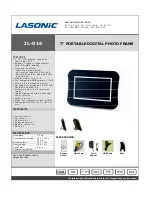
5. Focus and Brightness (Exposure) Settings
138
∫
Restrictions on Auto Focus Mode
• The AF Mode is fixed to [
š
] in the following cases.
– In Self Shot Mode
(If [
š
] is not available with the current Recording Mode, an available focus setting for each
Recording Mode will be used.)
• The AF Mode is fixed to [
Ø
] in the following cases.
– When using the Digital Zoom
– [Miniature Effect] (Creative Control Mode)
([Face/Eye Detection])
• It cannot be set to [
š
] in the following cases.
– [Clear Nightscape]/[Cool Night Sky]/[Warm Glowing Nightscape]/[Artistic Nightscape]/
[Glittering Illuminations]/[Handheld Night Shot]/[Appetizing Food]/[Cute Dessert] (Scene
Guide Mode)
• Under certain picture-taking conditions including the following cases, the Face/Eye Detection
Function may fail to work, making it impossible to detect faces. The AF Mode operates as [
].
– When the face is not facing the camera
– When the face is at an angle
– When the face is extremely bright or dark
– When the facial features are hidden behind sunglasses, etc.
– When the face appears small on the screen
– When there is little contrast on the faces
– When there is rapid movement
– When the subject is other than a human being
– When the camera is shaking
([1-Area])
The camera focuses on the subject in the AF area
on the centre of the screen.
• Position and size of the AF area can be changed.
([Pinpoint])
You can achieve a more precise focus on a point
that is smaller than [
Ø
].
If you press the shutter button halfway, the screen
that lets you check the focus will be enlarged.
• The focus position can be set on an enlarged
screen.
Pressing the shutter button halfway to adjust the composition
When the subject is not in the centre of the composition in [
Ø
], you can bring the
subject into the AF area, fix the focus and exposure by pressing the shutter button
halfway, move the camera to the composition you want with the shutter button pressed
halfway, and then take the picture.
(Only when the focus mode is set to [AFS].)
















































